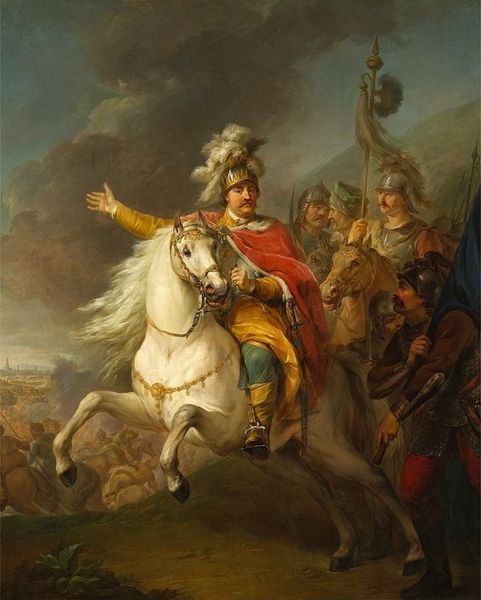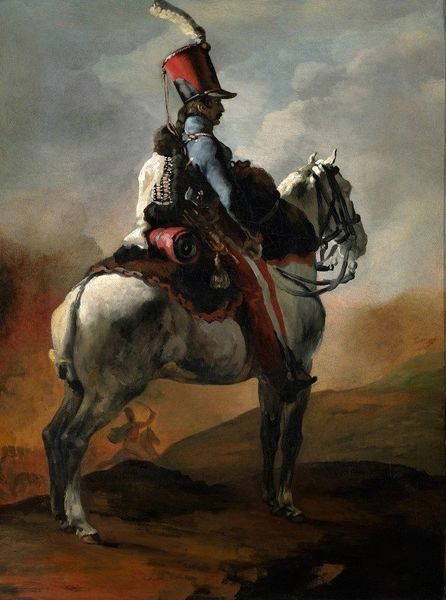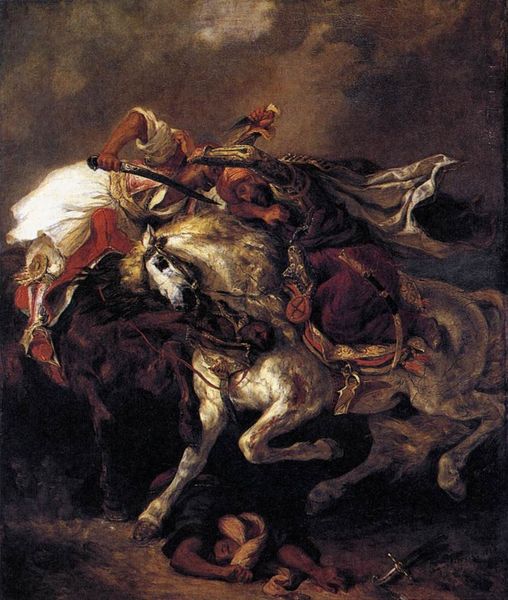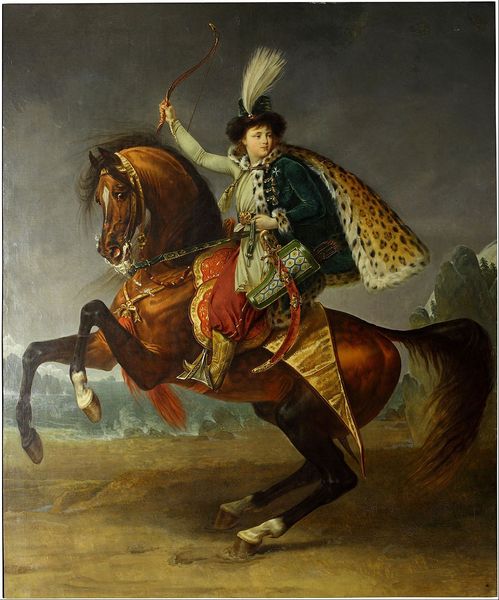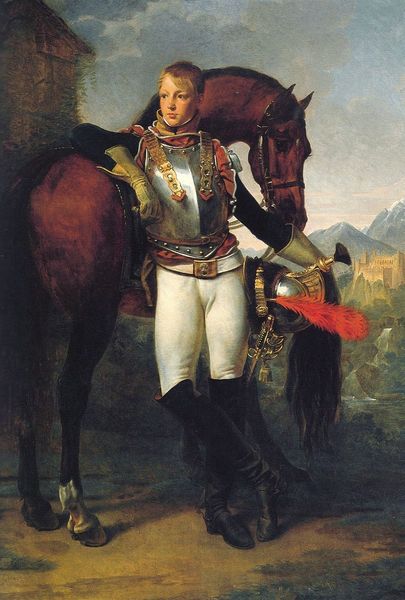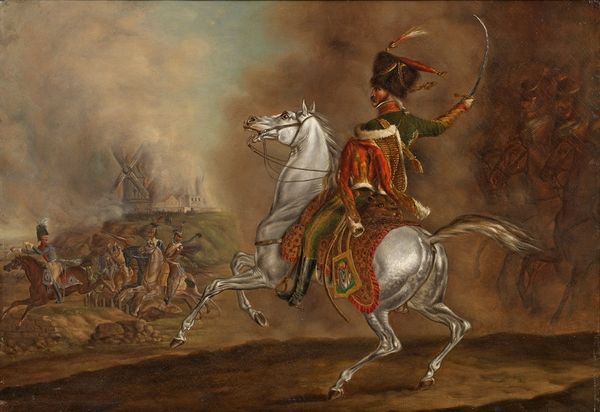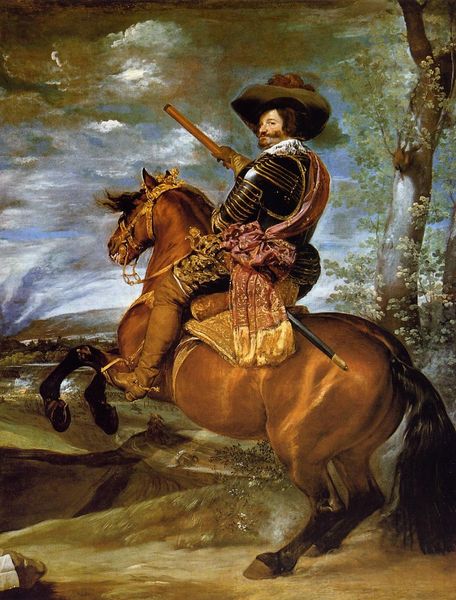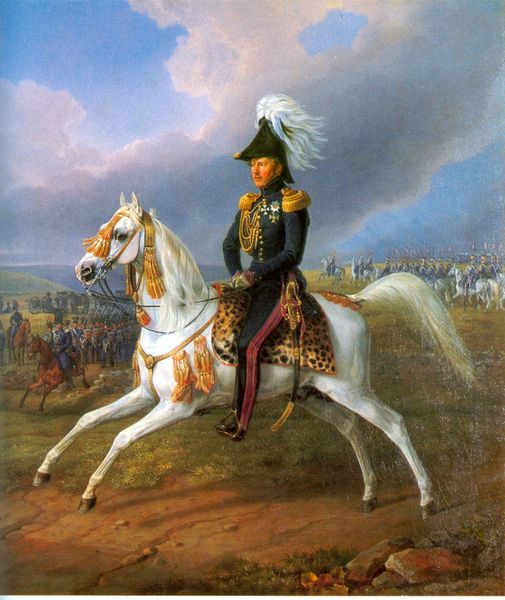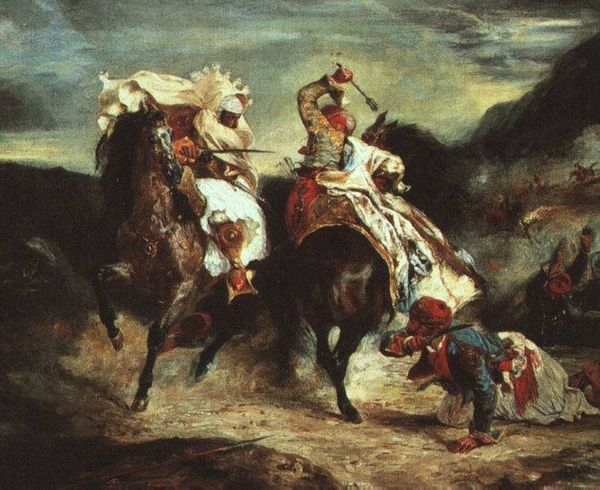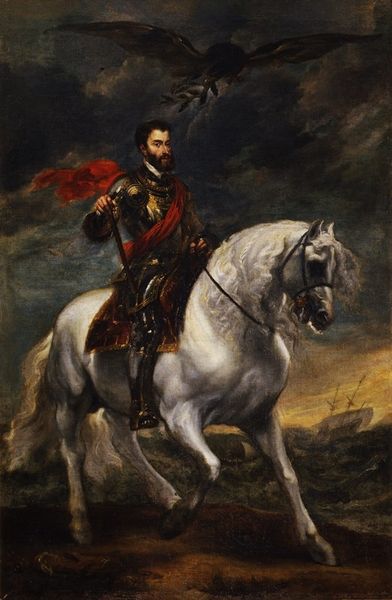
painting, oil-paint
#
portrait
#
painting
#
oil-paint
#
landscape
#
figuration
#
oil painting
#
romanticism
#
genre-painting
#
history-painting
Copyright: Public domain
Pierre-Narcisse Guérin painted this vivid oil painting, "Carle Vernet and classical figure composition," capturing the essence of military grandeur. Note the prominent leopard skin draped over the horse, a symbol deeply rooted in the iconography of power and exoticism. This motif echoes through centuries, harking back to ancient depictions of gods and heroes adorned with animal pelts, signifying strength and dominion. Consider how the leopard skin, once a mark of Dionysian frenzy and untamed nature, now serves a military figure. This transformation speaks volumes about our collective memory and the evolving narratives we impose on symbols. In a broader psychoanalytic sense, the leopard print might be considered a projection of primal energies onto the cultivated surface of civilization. It represents a psychological tension between our instinctual selves and the controlled persona we present to the world. This visual tension engages viewers on a deep, subconscious level. Observe, then, how symbols are not static but rather dynamic carriers of cultural memory, constantly reshaped by the currents of history and human experience.
Comments
No comments
Be the first to comment and join the conversation on the ultimate creative platform.

